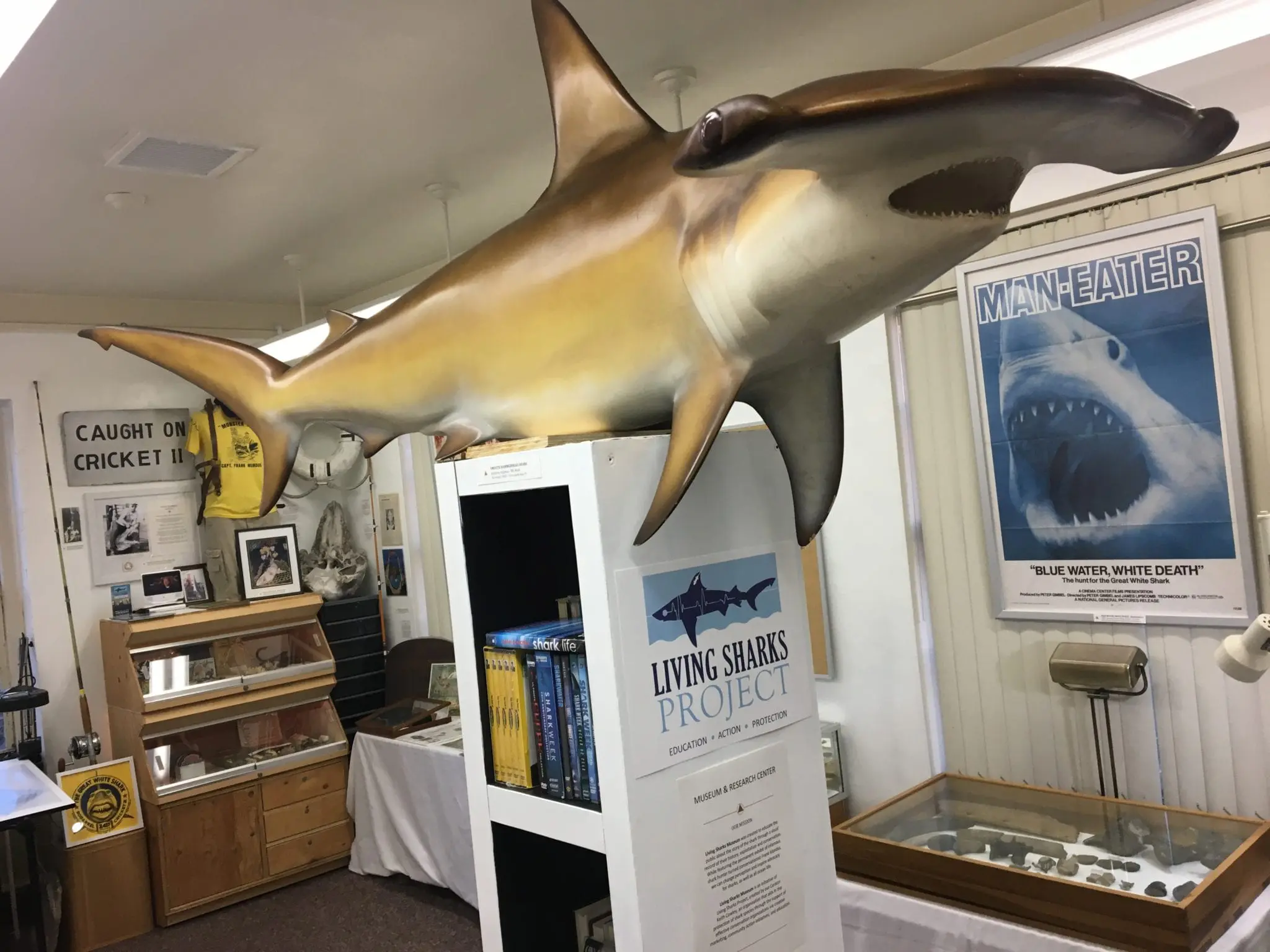It felt like every week last summer there was a new rumor circulating about a shark spotting near Misquamicut, real or imagined. While we should all instinctively know to steer clear of sharks in the water, these ancient creatures are actually very complex, wildly misunderstood, and vital to the health of our oceans. Keith Cowley curates the Living Sharks Museum in downtown Westerly in the hopes of combating these unwarranted negative stereotypes and helping to ensure their survival for another 400 million years.
Keith became fascinated by sharks and prehistoric animals at a young age, as many do.
“As young people, we’re always attracted to the extremes of the world, especially within the animal kingdom. We like the teeth and the claws and the predation and the wild side of life,” Keith explained. “As we get older, we start to experience the subtleties in the world and streamline our interests into something that may remain a hobby or just an interest, but some are able to take it an extra step and share it with others.”
Fortunately for the sharks of the world and all of the people who find them fascinating, Keith was able to do just that!
“I couldn’t figure out how to make college happen at the time I was expected to go, so I didn’t. A lot of it was my personal interests trumping the social expectations,” he shared.
Instead, he combined his passion for prehistoric animals, his talent for art and graphic design, established a rapport as a designer and scientific illustrator for museums and private clients, including The Dinosaur Place in Montville, Connecticut and even a gig with the television network Animal Planet. By networking, he was able to continue working as an amateur fossil hunter and preparator as well, carefully uncovering the buried secrets of ancient sharks and other predators.
After traveling the country on digs, Keith moved to Westerly in the late 2000s and began working in the office that is now home to the Living Sharks Museum about six years ago.
“It was my art and design studio and I used the space to do my personal shark research as well,” he explained. “At the time, I was doing shark and migratory species data collection for an NOAA Fisheries contractor, and utilized the opportunity to study commercial and recreational fishing of sharks, as well as shark tournaments, which is when sharks are caught for prize money, and what sort of impact these things have on sharks.”
The idea for Living Sharks came about in September 2018, after Keith took stock of his impressive fossil collection that he had been building and carting around since his days at Wheeler High School.
“I had accumulated over 40 species of prehistoric sharks, as well as fossils from their diet of marine mammals and reptiles, which I had used for educational programming before. It was always in the back of my mind that I’d continue to educate with that material, but I suddenly realized that my studio space could double as a shark history gallery and a place to expose others to the experiences I had been having in the world of modern sharks.”
His most recent experience was this summer aboard the M/V Ocearch during Expedition Nantucket where he was able to oversee the satellite tagging of a 12-foot female Great White Shark named Ack. Tagged for her migratory data, her movements can be followed online in real-time on Ocearch’s shark tracker. She will give scientists five years of movement data, and Keith is teaching museum visitors and school groups how the process works as part of his advocacy programming.
However, it should be noted that the one thing you won’t find at the Living Sharks Museum is any living sharks.
“We aim to keep living sharks in the ocean,” Keith explained. “So that’s typically how we begin our conversation about conservation.”
One of Keith’s primary goals in educating others is encouraging and enabling advocacy, regardless of their background. Sharks are consistently misrepresented by the media as a real life sea monster, the villain in movies, a scary story in the news, but in reality, they’re much more complicated creatures than that.
“We are working to change the way that they’re perceived by giving our visitors facts and access to the outlets where they can actually do some good,” he said.
In essence, Keith is a protector of both the history of sharks and their future as well, and by visiting Living Sharks Museum, you can learn how to become one as well! Admission to the Living Sharks Museum is always free.






